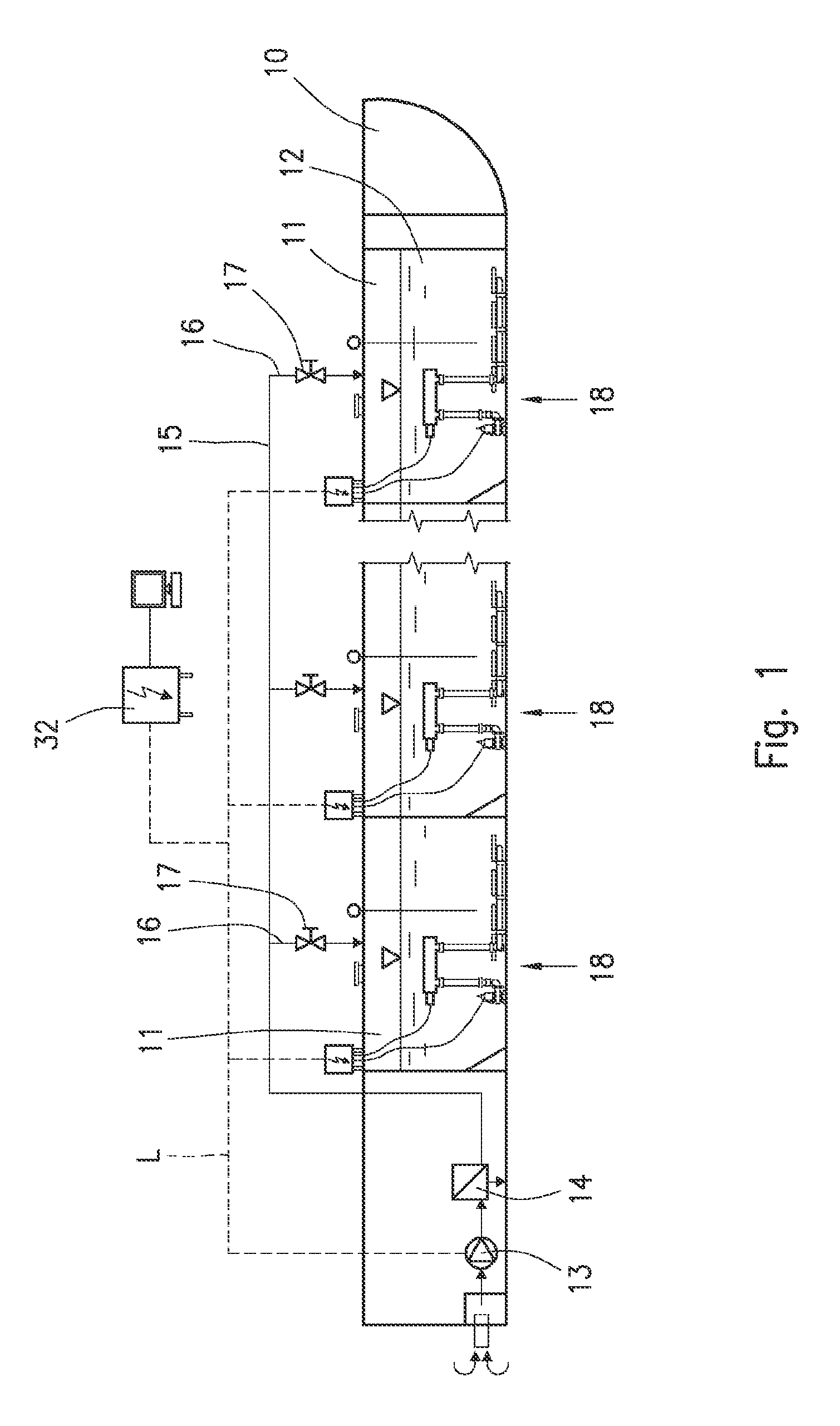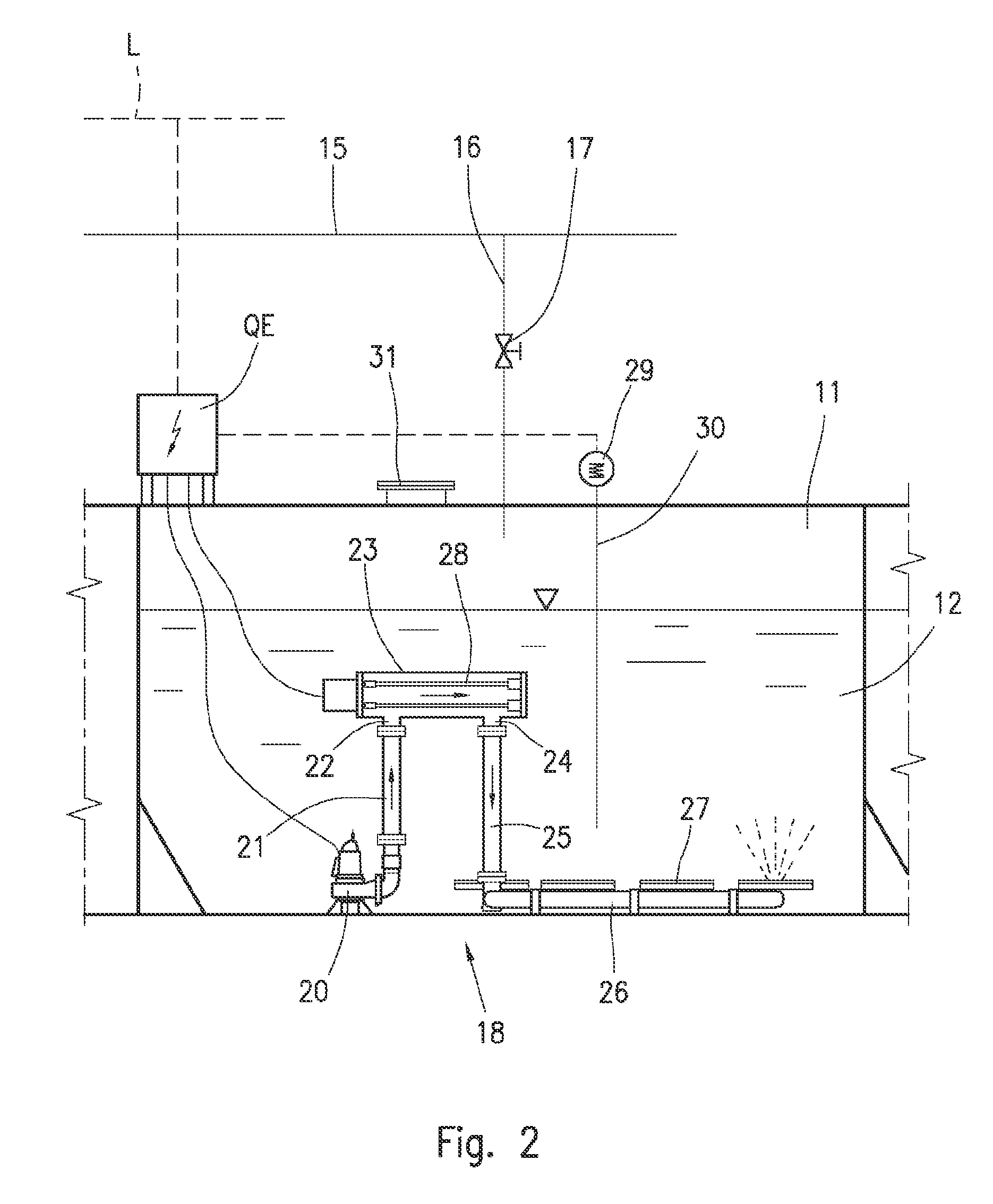Method and a modular system for onboard treatment of ballast water
a ballast water and modular technology, applied in the field of ballast water treatment on board, can solve the problems of generating potentially noxious conditions in the receiving environment, affecting the environment in which the ballast water is unloaded, and affecting the operation efficiency of the operation, so as to reduce the overall dimension, and minimize the treatment period. the effect of time required
- Summary
- Abstract
- Description
- Claims
- Application Information
AI Technical Summary
Benefits of technology
Problems solved by technology
Method used
Image
Examples
Embodiment Construction
[0049]In FIG. 1, a generic ship is indicated by the reference number 10, for example a cargo for carrying goods, or a passenger ship, comprising a plurality of water storage tanks 11 designed for being partially and / or fully filled with an amount of ballast water 12, to be treated and sterilised according to known standard procedures conforming to national or IMO legislations.
[0050]The ballast water 12, sucked from an external environment by one or more pumping units 13, is loaded into the single storage tanks 11 by a filtering unit 14, configured for retaining sucked sediments and possible seaweed and sea organisms, by a main water distribution piping 15 and by branched pipes 16, each of said branched pipes 16 being provided with a control valve 17.
[0051]As shown in FIG. 1 and the enlarged detail of FIG. 2, a water recirculation and UV sterilizing apparatus or device, generally indicated by reference number 18, is provided inside each storage tank 11, by which recirculation and UV ...
PUM
| Property | Measurement | Unit |
|---|---|---|
| residual time | aaaaa | aaaaa |
| sailing time | aaaaa | aaaaa |
| time | aaaaa | aaaaa |
Abstract
Description
Claims
Application Information
 Login to View More
Login to View More - R&D
- Intellectual Property
- Life Sciences
- Materials
- Tech Scout
- Unparalleled Data Quality
- Higher Quality Content
- 60% Fewer Hallucinations
Browse by: Latest US Patents, China's latest patents, Technical Efficacy Thesaurus, Application Domain, Technology Topic, Popular Technical Reports.
© 2025 PatSnap. All rights reserved.Legal|Privacy policy|Modern Slavery Act Transparency Statement|Sitemap|About US| Contact US: help@patsnap.com



